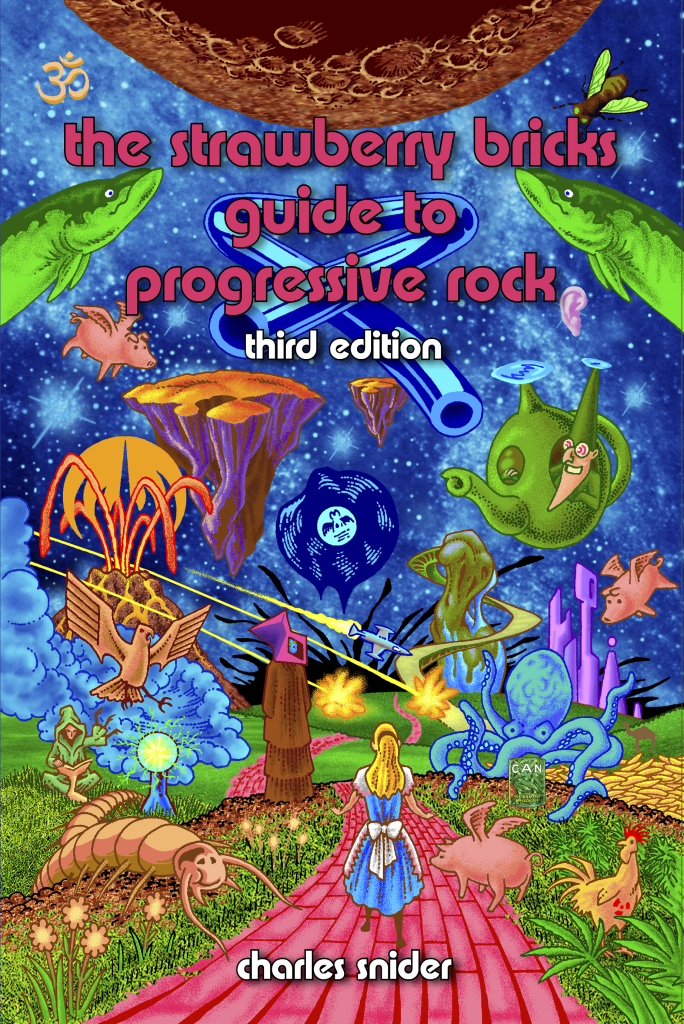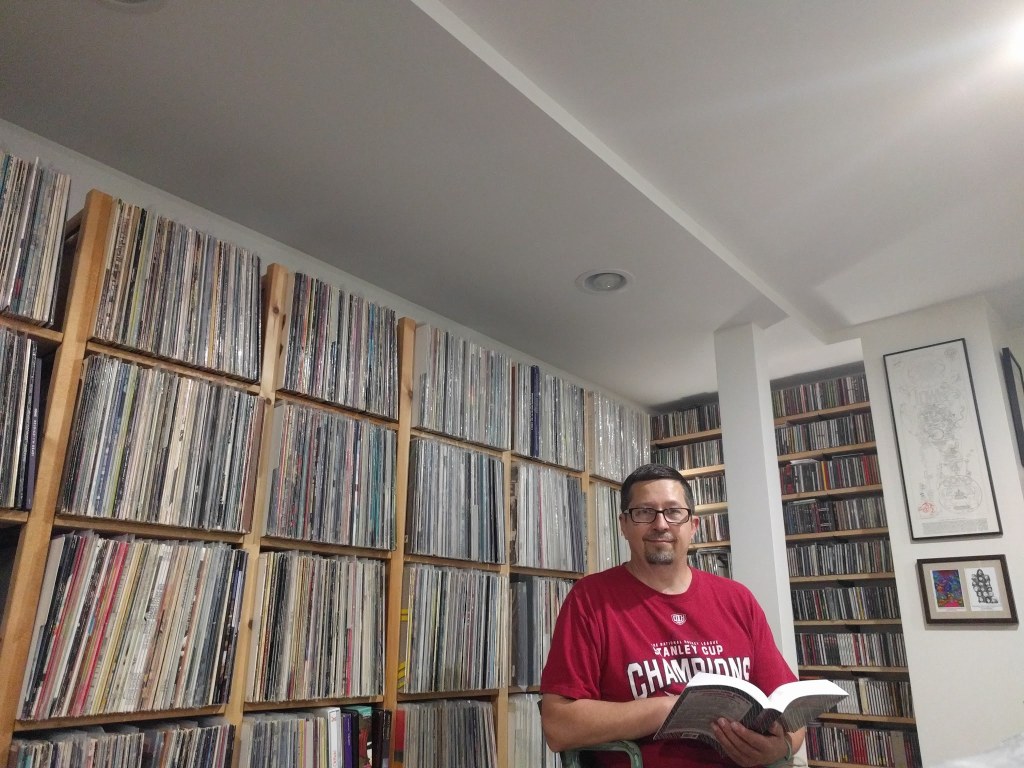
This is the latest in a line of spectacularly good albums to seemingly appear from nowhere and sit completely at ease on this blog. Earlier this year it was the somewhat more earnest, Egg-influenced Zopp, last year the startling Brazilian prog prodigies Stratus Luna, prior to that the dreamy psychedelic landscapes of Magic Bus.
Magick Brother Mystic Sister, of course, owe their name to a Gong album, that somewhat folky debut adventure before the band so magnificently morphed into punky discordancy with ‘Camembert Electrique’. And in fact the band’s two main members Eva Muntada (keyboards/vocals) and Xavi Sandoval (bass/guitar) recall an inspirational meeting with Daevid Allen in 2000 on the first of their two trips to Canterbury Festival where they saw Gong, Caravan and Arthur Brown (the second time they saw Kevin Ayers). Daevid told us, “you come from Barcelona to listen to this music, you are crazy but we love crazy people, we are all crazy” It was a pilgrimage of sorts, as Eva puts it “a great opportunity to see these great masters and learn a little”.

They kept in touch with Daevid and a few years later were responsible for unearthing the extraordinary Gong video shot in 1973 at the Santa Maria de Montserrat monastery, up in the mountains above their native Barcelona. The story of this might well be the feature of a future Facelift feature, as Eva has given me access to the emails between her and Daevid which led to the release of this on DVD. It’s a lovely story.
Yet the band they bear most resemblance to is probably Caravan circa ‘If I Could Do It All Over Again’, courtesy of a deliciously dated Sixties vibe, flute solos to die for and bossanova-flecked rhythms. The band is completed by another couple who joined in 2013, Maya Fernandez and Marc Tena (drums). Eva told me “Maya (came to us) with flutes on Xavi’s original project of putting music to the Tarot (Fungus Mungus) and she brought her partner Marc, an old friend music producer and jazz lover. We loved doing versions of Soft Machine, Skin Alley and Jethro Tull in concert, and really enjoyed making improvisations with them. Playing in a group opened up new possibilities and this album is part of the result.”

The first two tracks on the album were also the two pieces pre-released, which alerted me initially to quite how evocatively good this band is. The music (and video) for ‘Utopia’ sets the band’s stall out: a track which has in its foundations a bassline evocative of Soft Machine’s ‘Slightly All The Time’ floats away dreamily, picks up tempo before finally winding down once more with glissando guitar.
‘Waveforms’ is much more funky, going through the entire gamut of sixties clichés: spooked out organ, congas, wildly cavorting flute, wah-wah, sensual female vocals, woodwind a la Ayers’ ‘Joy of a Toy’ – this is a kind of anachronistic bliss….
After two such glorious tracks, the worry was that this release might have been frontloaded to contain the album’s highlights. Even if that’s the case the music continues to deliver. ‘Arroyo del Buho’ is simply fabulous: grandiose, with a classical piano intro moving on to eastern inflections, owl hoots, then virtuoso flute playing which is soaring, fluttering and magnificent. ‘Echoes from the Clouds’ could well be the album’s zenith – from a serene Canterburyesque chiming keyboard motif a buckling fuzz bass emerges muddily before disappearing behind another of those jaunty rhythms, with lovely harmonized vocals. Again the flute is to the fore, with a very Dave Sinclairesque trait restating the main theme before meandering off into carefully manicured solos.

‘Movement 2’ features mellotron and outraged flute squawks before settling on an Electric Orange-type groove with congas to boot. Elsewhere other familiar sounds from the late Sixties predominate: the Wurlitzer sounds at the start of ‘Love Scene’ eventually stretch out into a delicious Arthur Brown-like bluesy ramble, whilst ‘The First Light’ chooses Floydish serenading and wobbled vocals. Elsewhere the music drives on, with cheesed out swirls of Hammond organ, plunked bass lines and a lovely languid feel throughout. The penultimate track ‘Instructions for Judgement Visions’ sees the band really start to extend and give a flavour of what an extended live jam might sound like.

Whilst this is clearly an extremely tight band (Eva told me that “normally we play bass, drums, keyboards and flute (together) and add the guitars at the recording”) the stars are undoubtedly the two female members: with Muntada’s versatile and beautifully weighted range of keyboards, and a succession of glorious flute performances from Maya Fernandez which are probably the most inspiring I’ve heard this side of Jimmy Hastings. “We recorded it at home. We live near the Park Güell in Barcelona where we have a cabin with a recording homestudio. From our study we can see the amusement park and the Tibidabo mountain (The magic mountain of Barcelona). It’s a very inspiring sight.
“Although we work on playing the songs live, for the moment we are a studio group. In Barcelona you must pay to play which complicates things a lot. So far we have been a totally underground group. We live in our own world and we believe that the time has come to share it, after all, art is about this. We make music for the utopian lifestyle that we would like to live.

“After Covid 19 we would like to play live, as soon as the gates are open! “
All hail to that!
Magick Brother Mystic Sister is out on June 12 on John Colby Sect Records in Spain, and Sound Effects Records everywhere else
https://magicbrothermysticsister.bandcamp.com/releases
https://www.facebook.com/magickbrother_mysticsister-1293033870845224/
https://www.soundeffect-records.gr/magick-brother-mystic-sister









